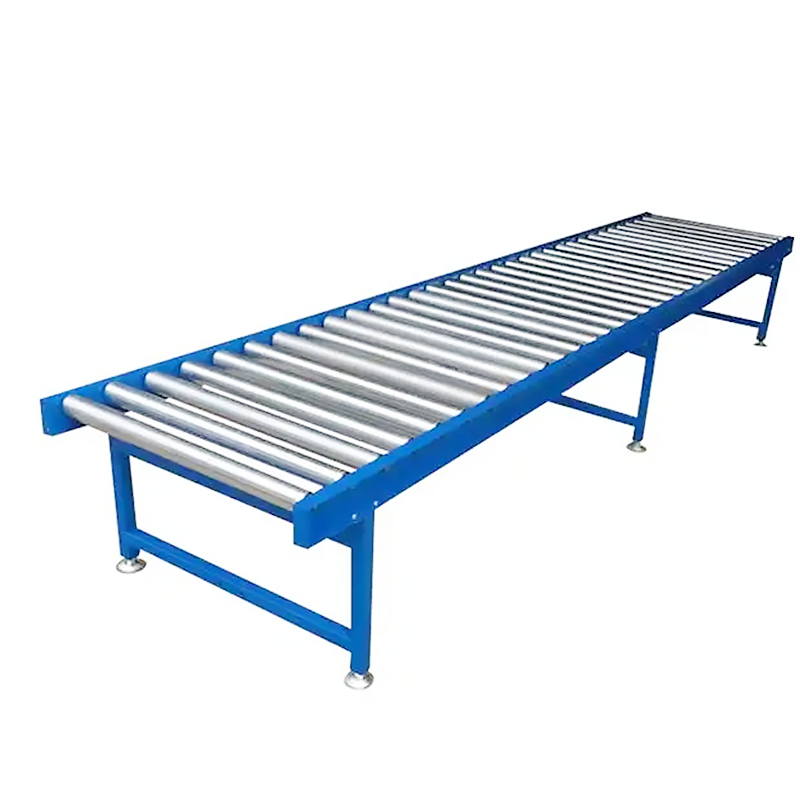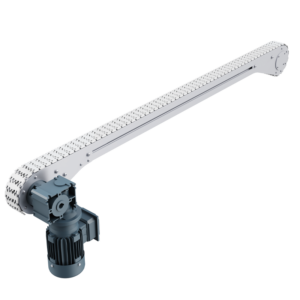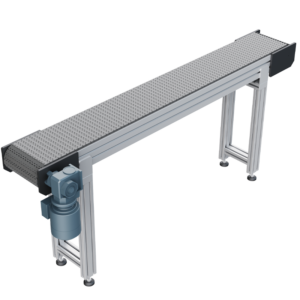Roller conveyors are known for their simplicity, fortikeco, and ease of maintenance, making them ideal for a wide range of industrial and commercial applications. The rollers are commonly coated with high-traction materials to ensure the steady movement of items, proving their worth in warehouses, production lines, packaging centers, and more.
Priskribo
Roller Conveyors for Sale
The unpowered roller conveyors, a crucial component in industrial transport belts, plays a key role in various production environments. It excels at moving materials efficiently across its length, facilitating smooth material transfer.
Unpowered Roller Conveyor Structure & Operation
This conveyor is including rollers, belts, a drive mechanism, krampoj, and a frame. The drive mechanism moves the rollers, which in turn propels the belt and the materials placed on it, ensuring continuous transport.

Unpowered Roller Transportilo Benefits
- Maintenance is hassle-free, with easy belt and roller replacement and cleaning.
- Highly adaptable to different material types and we can customize for specific processes.
- The continuous conveyance translates to high efficiency in material transport.
- Its simple design yields high reliability and stable operation.
- Economical both in initial cost and maintenance, saving on operational expenses.
Utilization of Unpowered Roller Conveyors
Their wide application ranges from chemicals to pharmaceuticals, and from food to plastics industries, handling material transport, assembly, processing, and storage.
Usage Guidelines for Unpowered Roller Conveyors
- Prevent material jamming between rollers to avoid damaging the conveyor.
- Regularly inspect the conveyor belt for wear or slack, adjusting or replacing as needed.
- Safeguard personal and equipment safety during maintenance to prevent accidents.
- Ensure component compatibility and balance, especially when replacing rollers or belts, for smooth operation.
Unpowered Roller Transportilo Evolution
As industrial demands grow, unpowered roller conveyors are evolving towards more intelligent and sustainable models, with:
- Enhanced efficiency through component optimization, reducing energy loss.
- Smart control systems for real-time monitoring and automatic adjustments.
- Improved environmental and energy-saving features with innovative materials and designs.
- Customization to diverse industry and process requirements for varied applications.
In essence, unpowered roller conveyors, key to industrial transport, are poised for greater advancements, continuing their wide-reaching potential and development.
Unpowered Roller Conveyor Composition
An unpowered roller conveyor consists primarily of rollers, a support frame, and a driving mechanism. The roller is the foundational element, generally crafted from metal or plastic, and mounted onto the frame. These rollers are interlinked through the driving device. Their surfaces are typically coated with rubber or plastic to boost the friction, thereby ensuring materials are conveyed steadily.
Unpowered Roller Conveyor’s Role in Logistics
The unpowered roller conveyor is a staple in the logistics sector, deploying in numerous scenarios such as:
1. Warehouse Operations: It facilitates rapid and automated material movement and sorting within warehouses, enhancing operational efficiency. Integrated with shelving and picking systems, it forms an extensive warehouse logistics network.
2. Production Assembly Lines: Utilized for the seamless transition of raw materials, components, or final products between stages, it diminishes manual labor, augments production flow, and lowers material damage or loss risks.
3. Packaging Processes: The conveyor is instrumental in transporting boxed or bagged items in the packaging industry, accelerating workflows, guaranteeing material stability during transit, and elevating the packaging quality and throughput.
4. Airport Cargo Handling: Essential in baggage transportation systems, it moves luggage from check-in to the airline cargo zones or from the reclaim area to the carousel, optimizing baggage handling and boosting passenger satisfaction in airports.
5. Courier Sorting Centers: In express delivery services, these conveyors sort and dispatch parcels efficiently, channeling packages from central hubs to varied sorting divisions or delivery vehicles. And they significantly enhance sorting accuracy and logistic processing rates.
Unpowered and Powered Roller Conveyors: Features, Application Scenarios and Selection Sactors
Due to the characteristics of the unpowered roller conveyor line, it is suitable for production scenarios with high environmental requirements, small batches, and multiple varieties. For example, in the food, medicine, cosmetics and other industries, the unpowered roller conveyor line is widely used. Cause it has advantages such as good sanitary conditions and convenient maintenance.
The powered roller conveyor line has the advantages of high efficiency, high speed and large-scale production. We can equip it with a variety of different accessories and devices. And it will achieve automated and intelligent operation, improve production efficiency and product quality. These characteristics of the powered roller conveyor line enable it to meet higher demands during the production process.
Due to the characteristics of the unpowered roller conveyor line, it is suitable for production scenarios with high environmental requirements, small batches, and multiple varieties. For example, in the food, medicine, cosmetics and other industries, the unpowered roller conveyor line is widely used due to its advantages. Such as good sanitary conditions and convenient maintenance.
The powered roller conveyor line is suitable for large-scale and efficient production scenarios. For example, in the automotive, electronics, home appliances and other industries, the powered roller conveyor line can achieve automated production. Besides it can improve production efficiency. At the same time, people can also equip it with a variety of different accessories and devices to meet different production needs.

Selection Sactors
When selecting conveying equipment, factors such as production scale, production environment, transportation distance and height, we need to consider. If the production scale is large and the transportation distance is long, then it may be more appropriate to choose a powered roller conveyor line. If the production scale is small and the environmental requirements are high, then an unpowered roller conveyor line may be more appropriate. Krome, we need consider the cost and maintenance requirements of the equipment.
Unpowered roller conveyors and powered roller conveyors each have their own advantages and disadvantages. It is necessary to choose the appropriate conveying equipment according to the actual production needs and environmental conditions. When choosing, we need consider various factors, including production scale, production environment, transportation distance and height, ktp.





